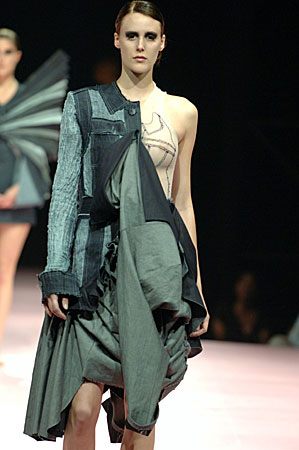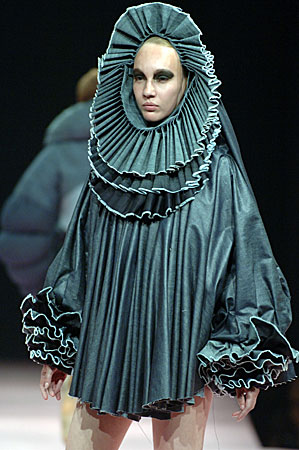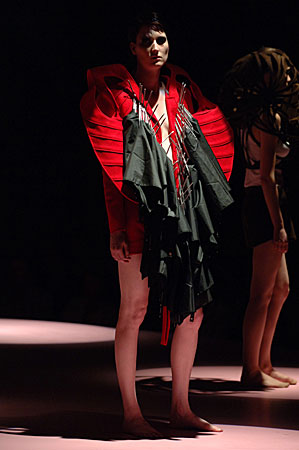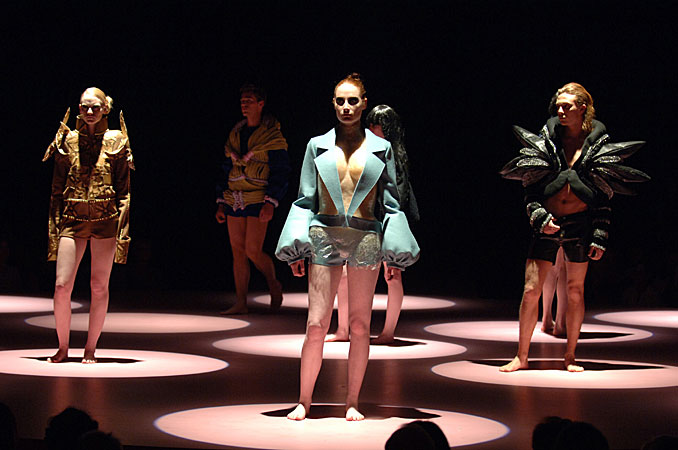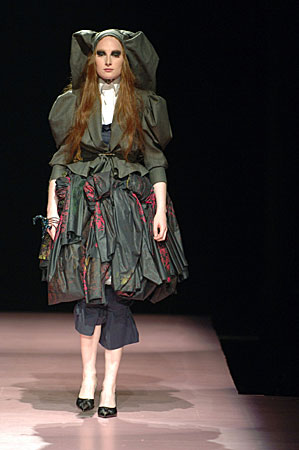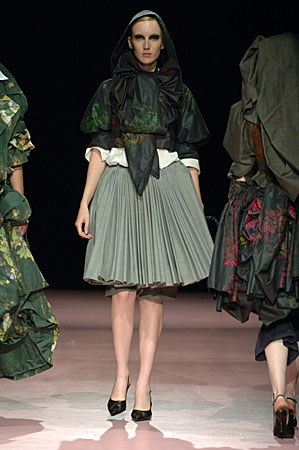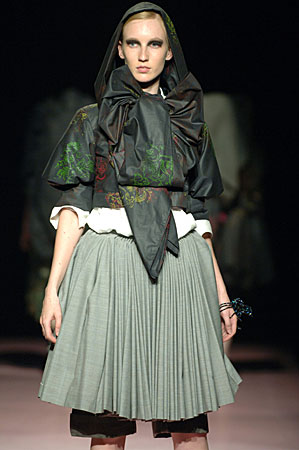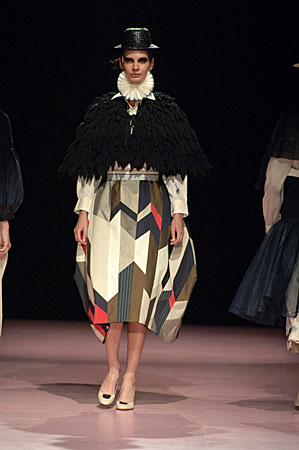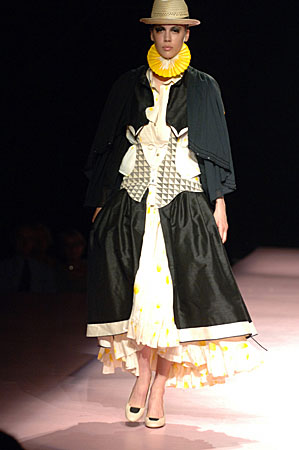-
Announcing... The WINNERS of the 2025 theFashionSpot Awards:
Designer of the Year
Ready-to-Wear Collection of the Year
Haute Couture Collection of the Year
Model of the Year
Photographer of the Year
Stylist of the Year
Magazine Cover of the Year
Ad Campaign of the Year
Congratulations to ALL of our worthy winners! Thank you to our tFS forum members who voted and participated.
You are using an out of date browser. It may not display this or other websites correctly.
You should upgrade or use an alternative browser.
You should upgrade or use an alternative browser.
Okay,let's see....
Here's the breakdown for each year's courses from antwerp-fashion.be
Here's the breakdown for each year's courses from antwerp-fashion.be
The freshman year of the training in fashion design is composed around three main artistic subjects. The most important course is the one on fashion design, which is taught by Nellie Nooren. The other two main courses are graphics, taught by Yvonne Dekock, and tailoring/ pattern design, taught by Chris Fransen. In addition to these three main subjects, the curriculum contains two specific subjects. One of these is the history of dress, starting with the earliest civilisations. Parallel to the historical periods treated in this course by Veerle Windels, the students are given a number of assignments in the graphics and design courses. The course on fashion and textiles forecasting familiarizes the students with various orms of communication in the fashion industry: professional jargon, material and colour sample charts and descriptions of general trends and impressions. Various assignments are given in all these artistic disciplines. The students are expected to work on them using as much creativity as possible and with an emphasis on experiment model, a unique discipline which is taught in all departments and years. The curriculum further contains theoretical courses covering the humanities and artistic-theoretical sciences such as the history of art, world literature, philosophy, sociology and psychology.
The same three main artistic subjects are taught in the second year. Fashion design is taught by Patrick De Muynck, graphics by Yvonne Dekock, and tailoring/ pattern design by Elke Hoste. From the rich history of dress until 1940, each of the students has to choose a historical figure with a costume typical for the period. Then, they have to do thorough research on the historical figure they have chosen and on his or her period, including the political, cultural and social structures of the time, as well as a detailed study of the fabrics, materials, patterns and characteristic for the age. The students then spend the first term recreating this historical costume down to the smallest details, including underwear, accessories, coiffure and make-up. This rather time-consuming technical assignment prepares the sudent for the work they will have to do during the next two terms, in which the emphasis lies on the more creative aspects of the main assignment, which is: the creation of an ‘avant-garde’ fashion collection of five silhouettes. This consists of drawing and making complete outfits and selecting colours and materials, inspired by the research carried out in the first term. Graphics teacher Yvonne Dekock sees to it that the drawing work is tuned to the individual collections and that the students develop a personal style. In addition to the obligatory course in drawing from a model, the second year covers two specific subjects: the history of dress from the Renaissance to the present, and modelling/ draping, taught by Heidi Pille. In this course, the students acquire teh skill of modelling and draping, working with materials directly on live models or dummies, without the aid of pencil and pattern paper. Not that the two disciplines are incompatible, quite on the contrary: by using materials to create forms and volumes directly, the students acquire a more direct knowledge of the art of tailoring, which they can then use in two-dimensional pattern drawing. Seminars on shoemaking, millinery or glove-making and other projects add variety to the programme and may also be useful in the students’ later careers. Finally, there are theoretical subjects: contemporary art, art history, literature, philosophy, sociology and psychology.
Third-year students (this year is referred to as the ‘first master year’) are required to present a collection of 8 silhouettes by the end of the year. This collection must be based on a preliminary study of either a European or a non-European culture. Again, the recreation of a typical costume or dress is seen as a necessary period of contemplation before starting to design the individual collection itself. The study of ethnic people leads to surprising discoveries, which, combined with the student’s own experiences, can give rise to an original collection. Teacher Walter Van beirendonck supervises the creative aspects from the beginning to the end, while Chris Fransen helps the students to find solutions to the technical and dimensional problems of tailoring. Regular consultation between the student and the teacher is very important. The best final results are achieved by those students whose creativity, enthusiasm and justification of the selected theme are followed up on a regular basis. The students can further broaden their horizons in graphic design taught by Yvonne Dekock, in computer graphics taught by Chris Gillis, and the courses on modelling/ draping taught by Heidi Pille. Drawing from a model remains an important artistic subject on the curriculum. In this ‘first master year’, the students have to take theoretical subjects which they can choose from a broad range of courses.
The final year (the ‘second master year’), which is guided by Linda Loppa, is almost entirely devoted to the final collection which is to include a minimum of 12 silhouettes. In this year, the students are expected to display a synthesis of all the skills and techniques they have acquired. The students are given complete freedom in selecting their source of inspiration: a favourite artist, a social or political question, a fascinating period in history. In order to have a fully-fledged all-round collection at the end of the year, the students have to start planning and designing very early on in the academic year. Final-year students need to draw on all their organisational skills and plan everything well right from the start. The outcome is to be the crown on four years of hard work. The final-year collections must reflect both the spirit of our times and the designer’s position with regard to prevailing trends. The approaching reality of professional life means that students become preoccupied with practical questions. Journalists, press agents, shop owners, fashion designers and companies are invited to give lectures on their profession.
The entire staff meets at regular intervals during the academic year in order to discuss and evaluate the work in progress of all four years, together with the students.
travolta said:
**Please do not quote pictures**
Hmm...I wonder what ethnicity and era this outfit is from??

Last edited by a moderator:
fireatwill
Member
- Joined
- Apr 12, 2005
- Messages
- 127
- Reaction score
- 0
wow. wow. wow. these student collectsions are AMAZING. wow.
<3 me.
<3 me.
scott, which designers and pieces stand out in your mind?
i wished they had shown more of the first years experiments -- i quite liked the previous years ( 2004) projects, but the fourth years collections were stellar. very strong all around...
i wished they had shown more of the first years experiments -- i quite liked the previous years ( 2004) projects, but the fourth years collections were stellar. very strong all around...
sea of stitches
Member
- Joined
- May 13, 2005
- Messages
- 604
- Reaction score
- 0
Annette Kölling seems consistantly strong, well, she was very good last year too. But wasn't she a second year last year as well? I'm confused.
Lluis Corujo Besga has a very gangster meets Victorian feel. I looooove it!!
Thanks for posting, Scott.
Lluis Corujo Besga has a very gangster meets Victorian feel. I looooove it!!
Thanks for posting, Scott.
Last edited by a moderator:
yes, thank you for posting scott. i agree w/ sea of stitches that Annette Kölling churns out very good stuff.
i liked this first years denim experiment:

if it was 'toned' down a bit it could be very wearable. the side pieces remind me of junya watanabe's 'milk maid' spring collection w/ the sacks built into the side. i can definately see this translating from aesthetically compelling into functional. the new fanny pack??
1st year 'experiment/ coloured jacket
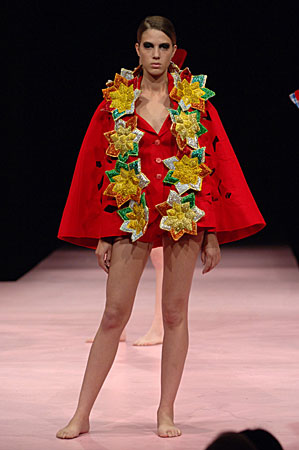
in my opinion, this is easy on the eyes. it reminds me of dressing up in christimas tree decorations. i love the detailing of the piece around her neck and the cape's cut outs are divine. again, this is a pretty visually pleasing piece that could be translated into something wearable and sellable.
i liked this first years denim experiment:

if it was 'toned' down a bit it could be very wearable. the side pieces remind me of junya watanabe's 'milk maid' spring collection w/ the sacks built into the side. i can definately see this translating from aesthetically compelling into functional. the new fanny pack??
1st year 'experiment/ coloured jacket

in my opinion, this is easy on the eyes. it reminds me of dressing up in christimas tree decorations. i love the detailing of the piece around her neck and the cape's cut outs are divine. again, this is a pretty visually pleasing piece that could be translated into something wearable and sellable.
Similar Threads
- Replies
- 4
- Views
- 2K
- Replies
- 305
- Views
- 209K
- Locked
- Replies
- 256
- Views
- 209K
- Replies
- 1
- Views
- 2K
- Replies
- 14
- Views
- 19K
Users who are viewing this thread
Total: 1 (members: 0, guests: 1)
New Posts
-
Jonathan Anderson - Designer, Creative Director of JW Anderson & Christian Dior (10 Viewers)
- Latest: justpassingthrough
-
The Music From Christian Dior Shows (PLEASE READ POST #1 FOR FULL SOUNDTRACK LISTS) (7 Viewers)
- Latest: CholoChic
-
-
-

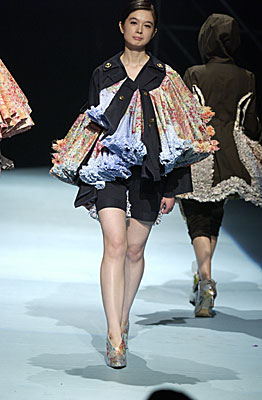
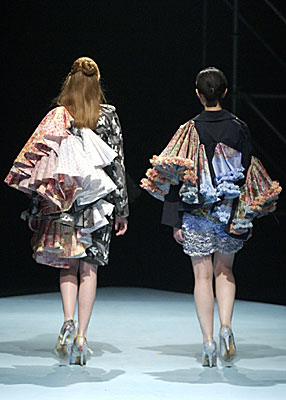

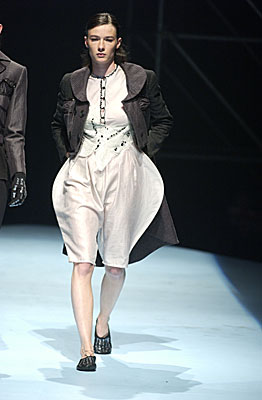
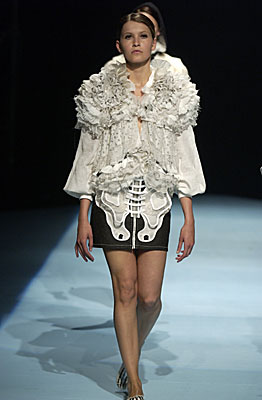
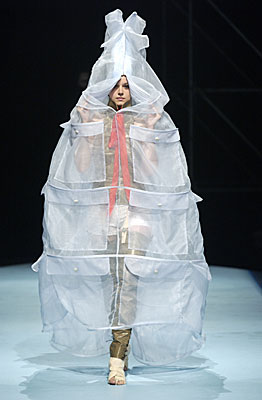
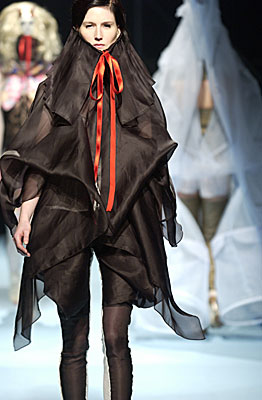

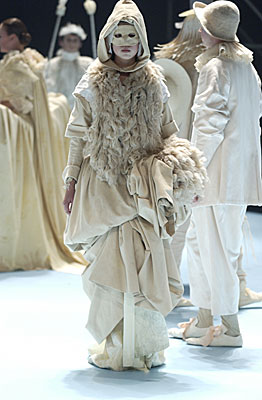

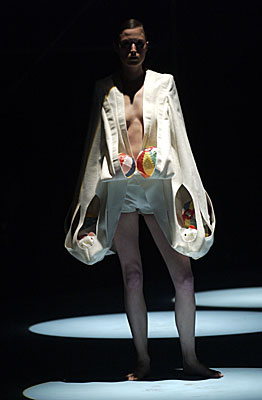
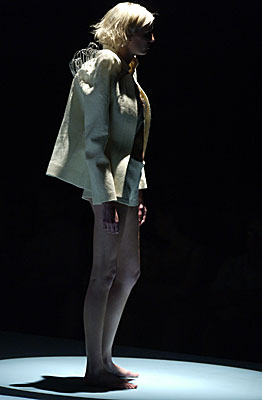
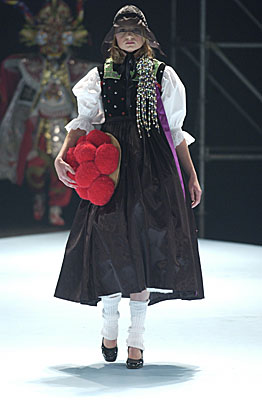
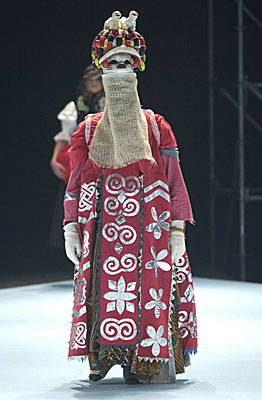

 i actually later found that bit on the site.
i actually later found that bit on the site. 


